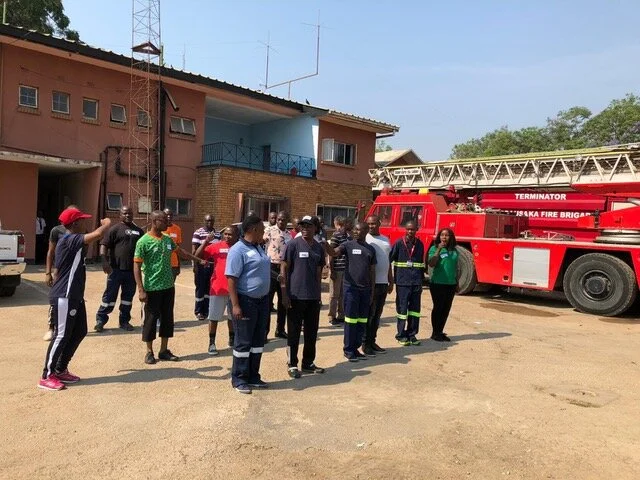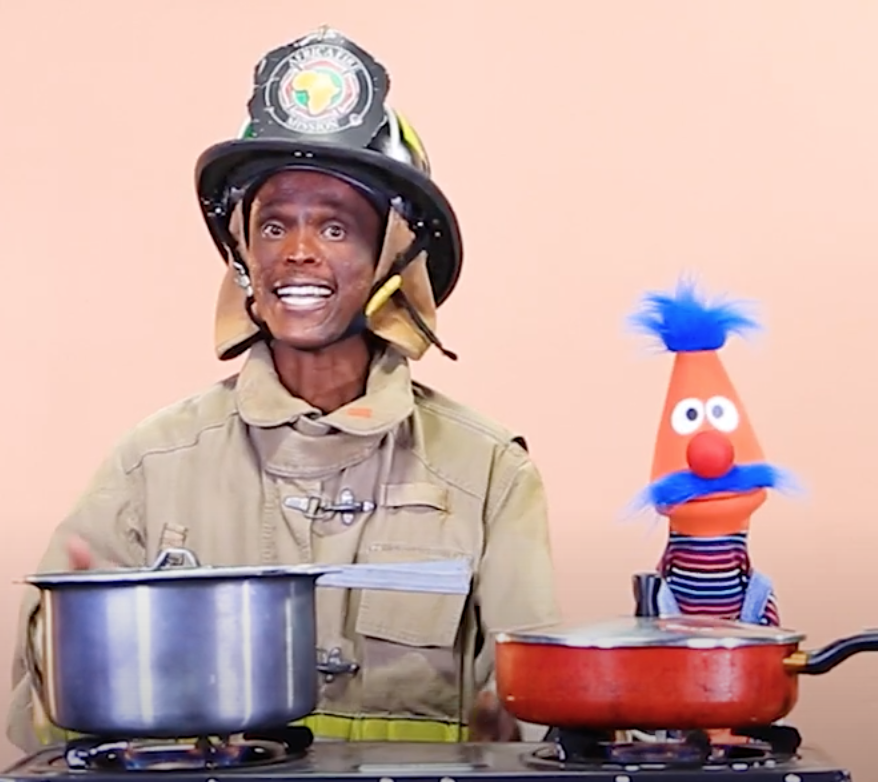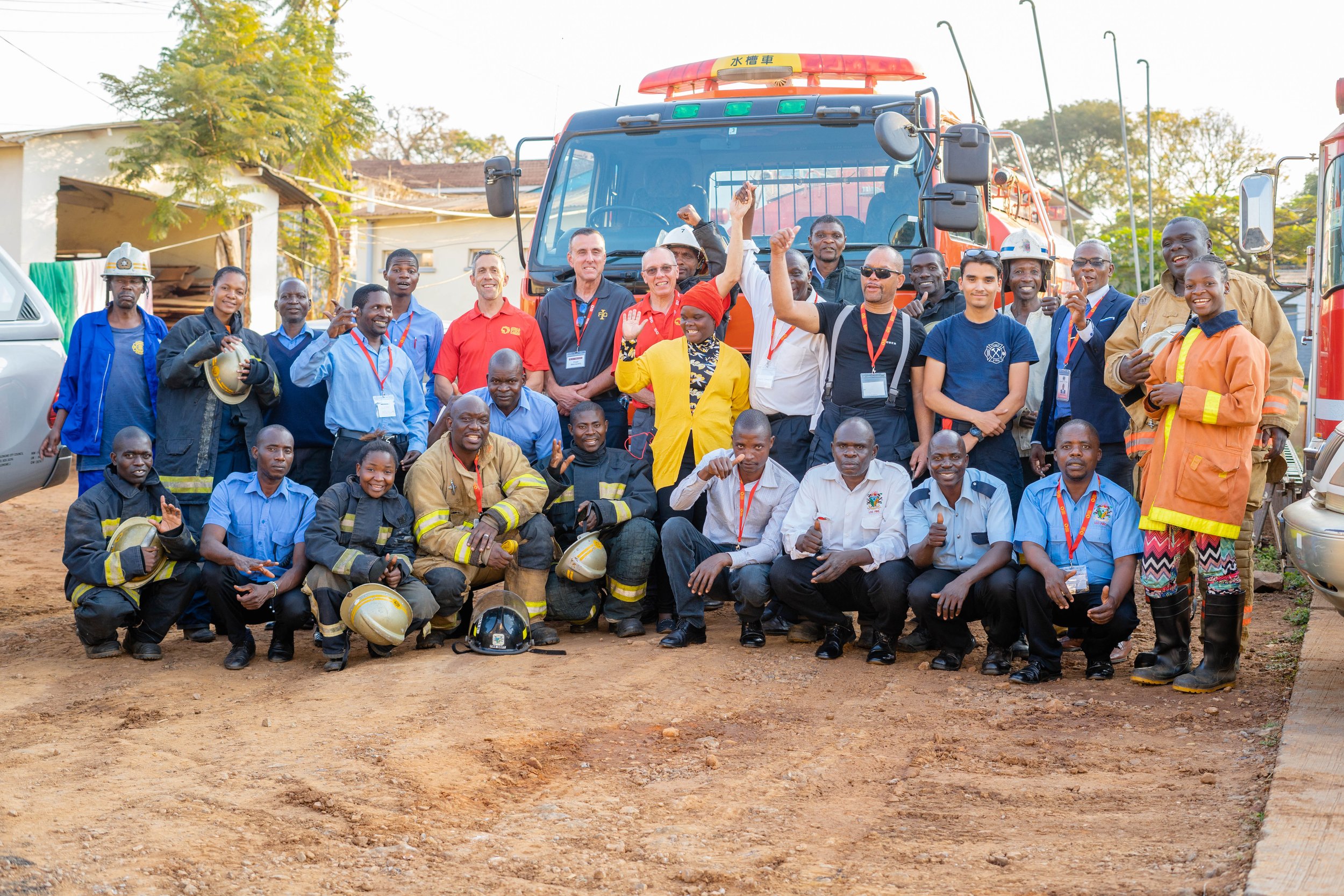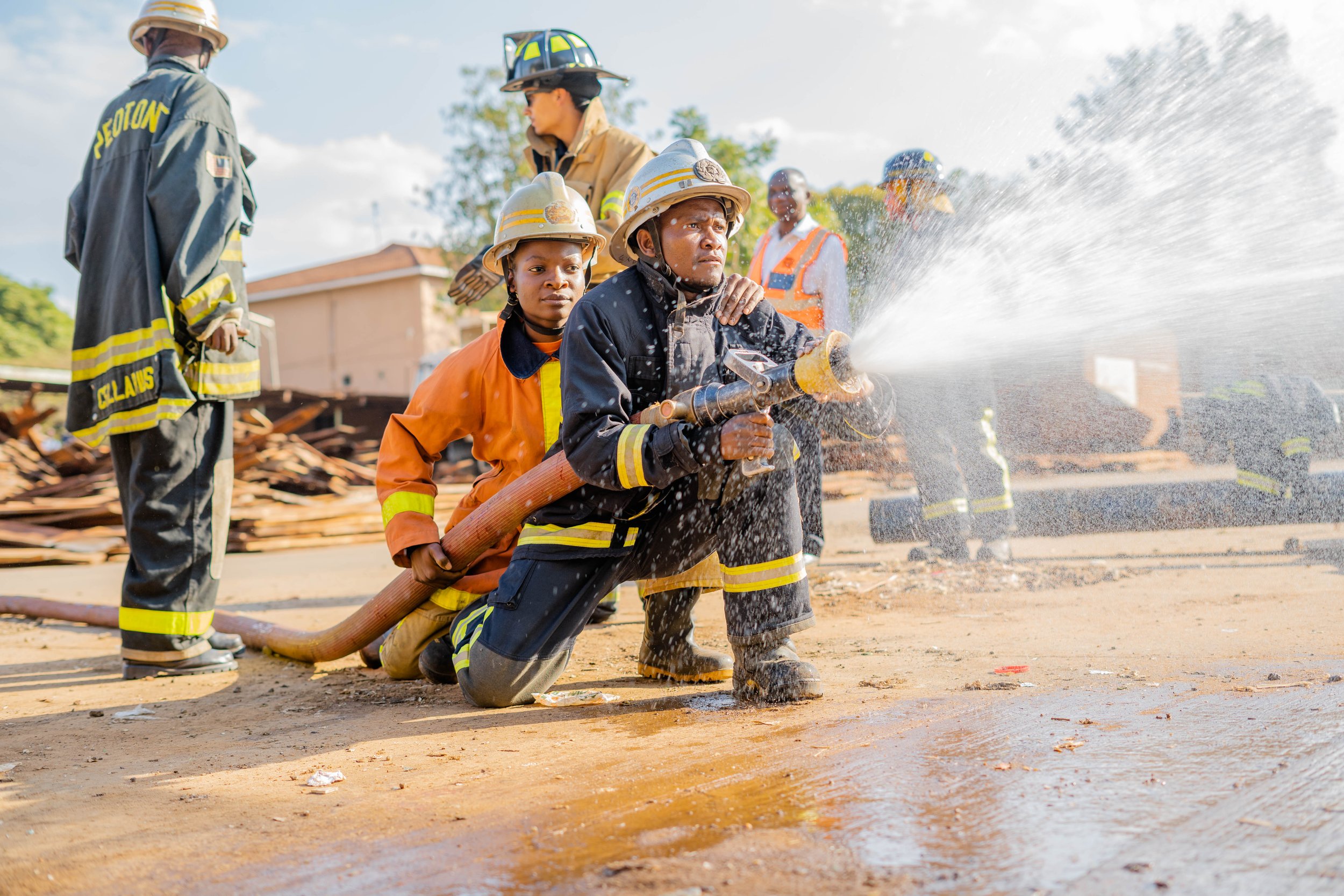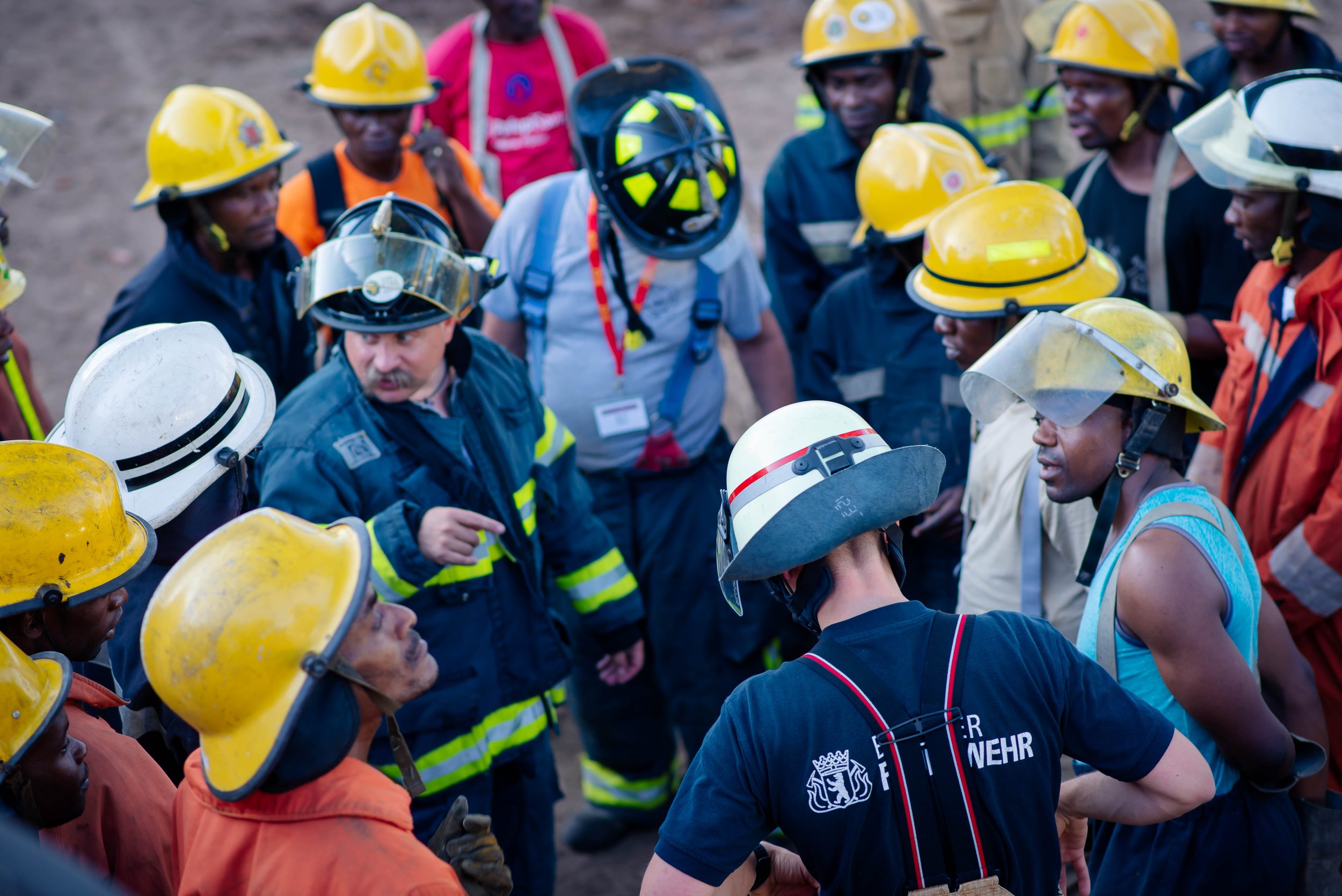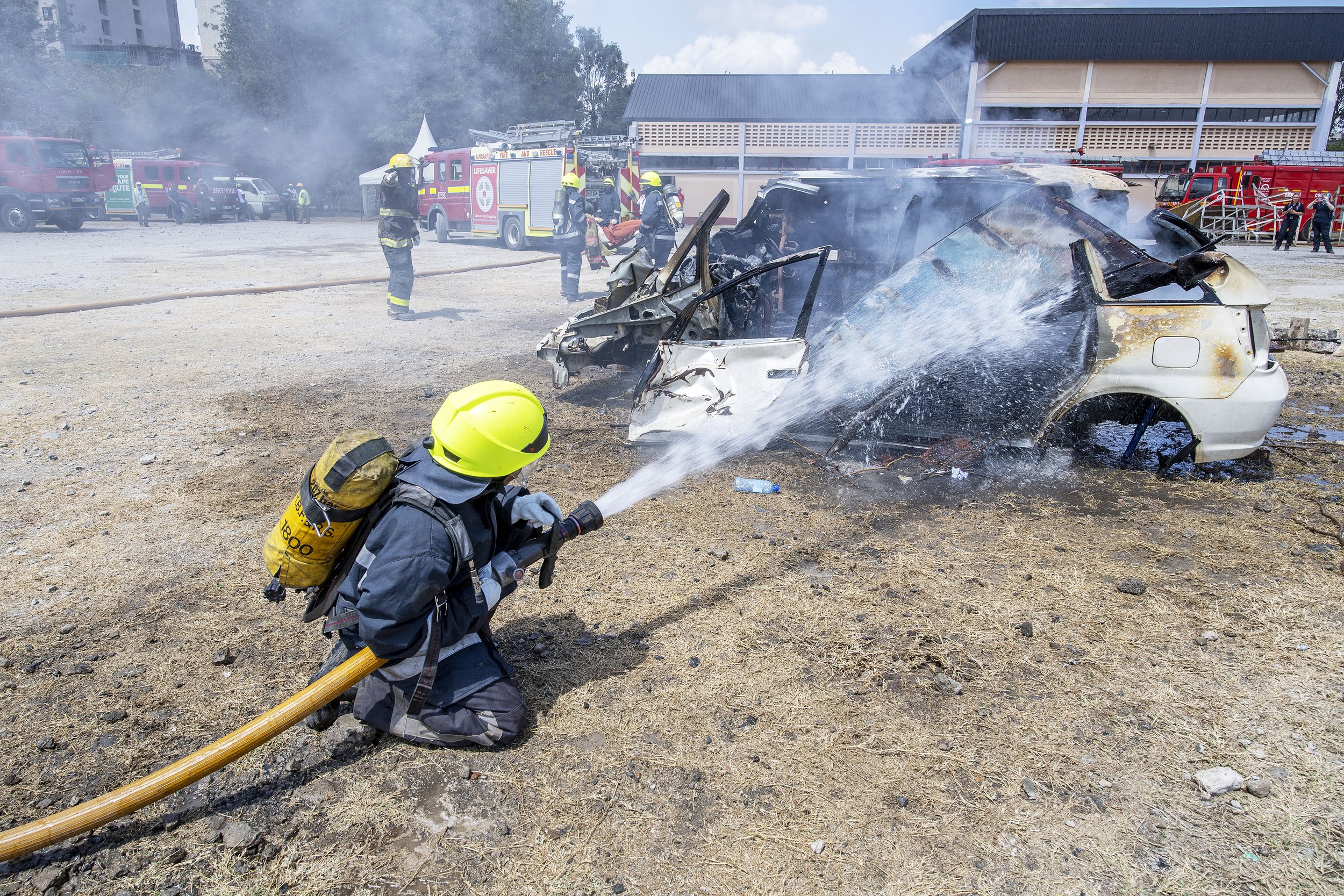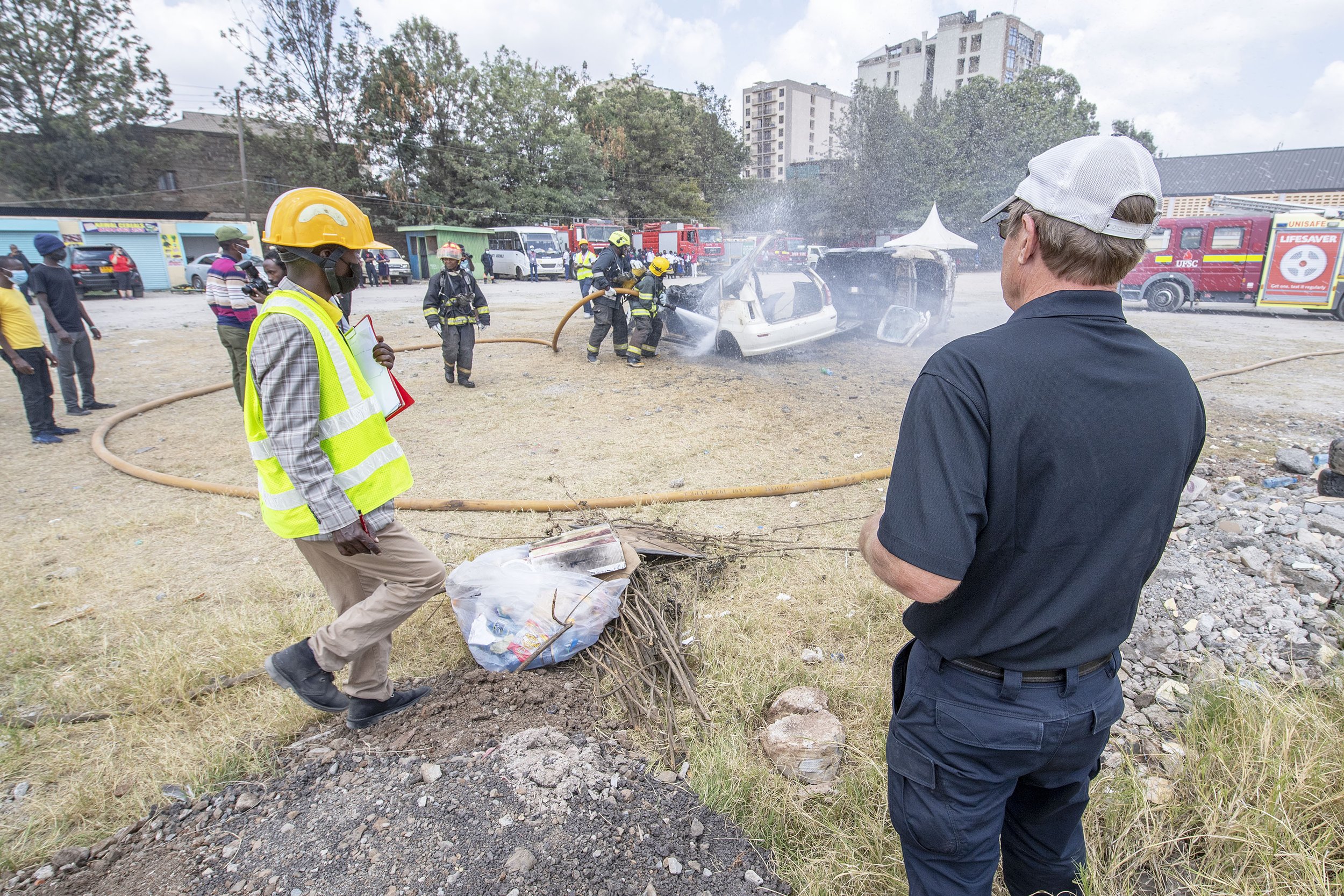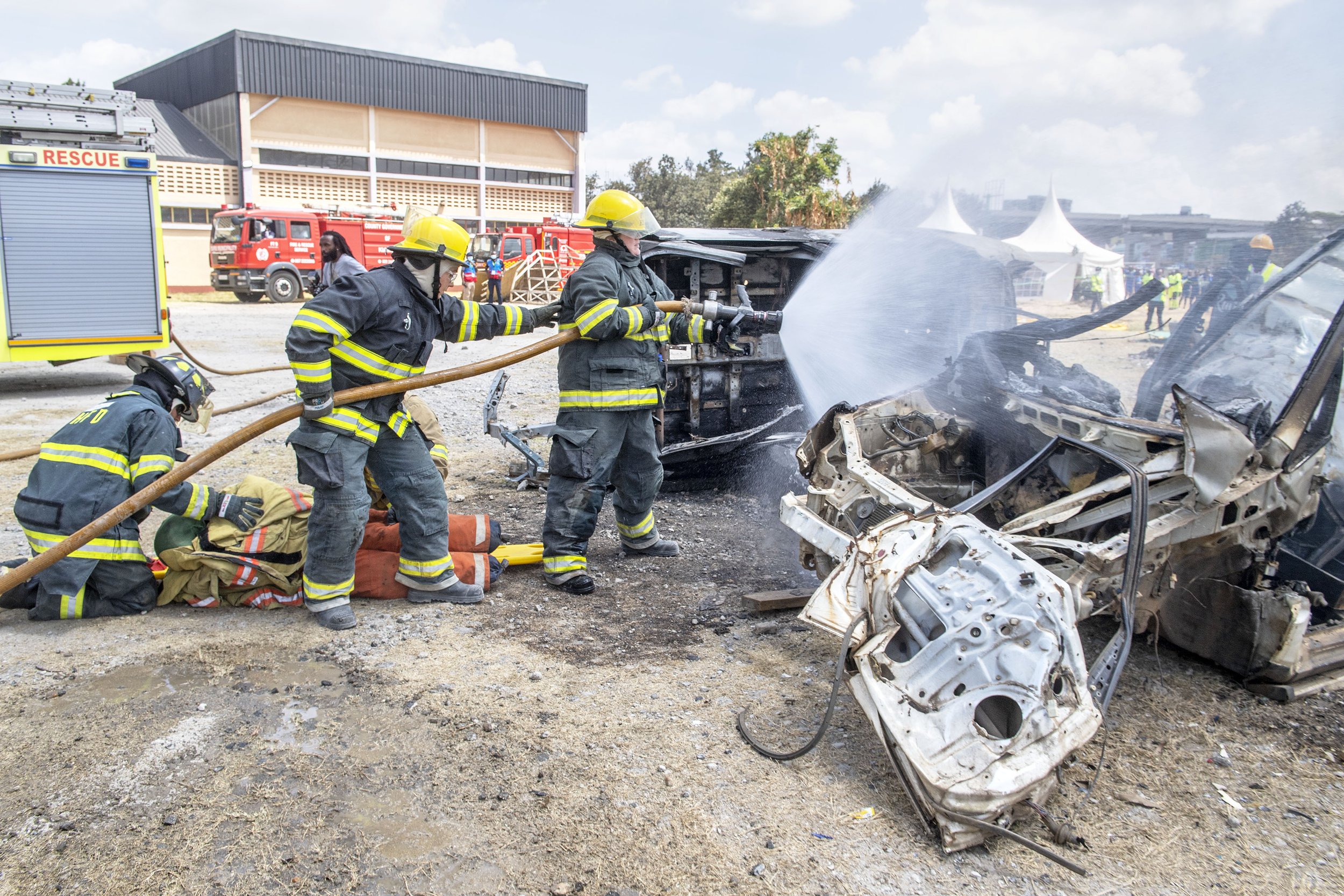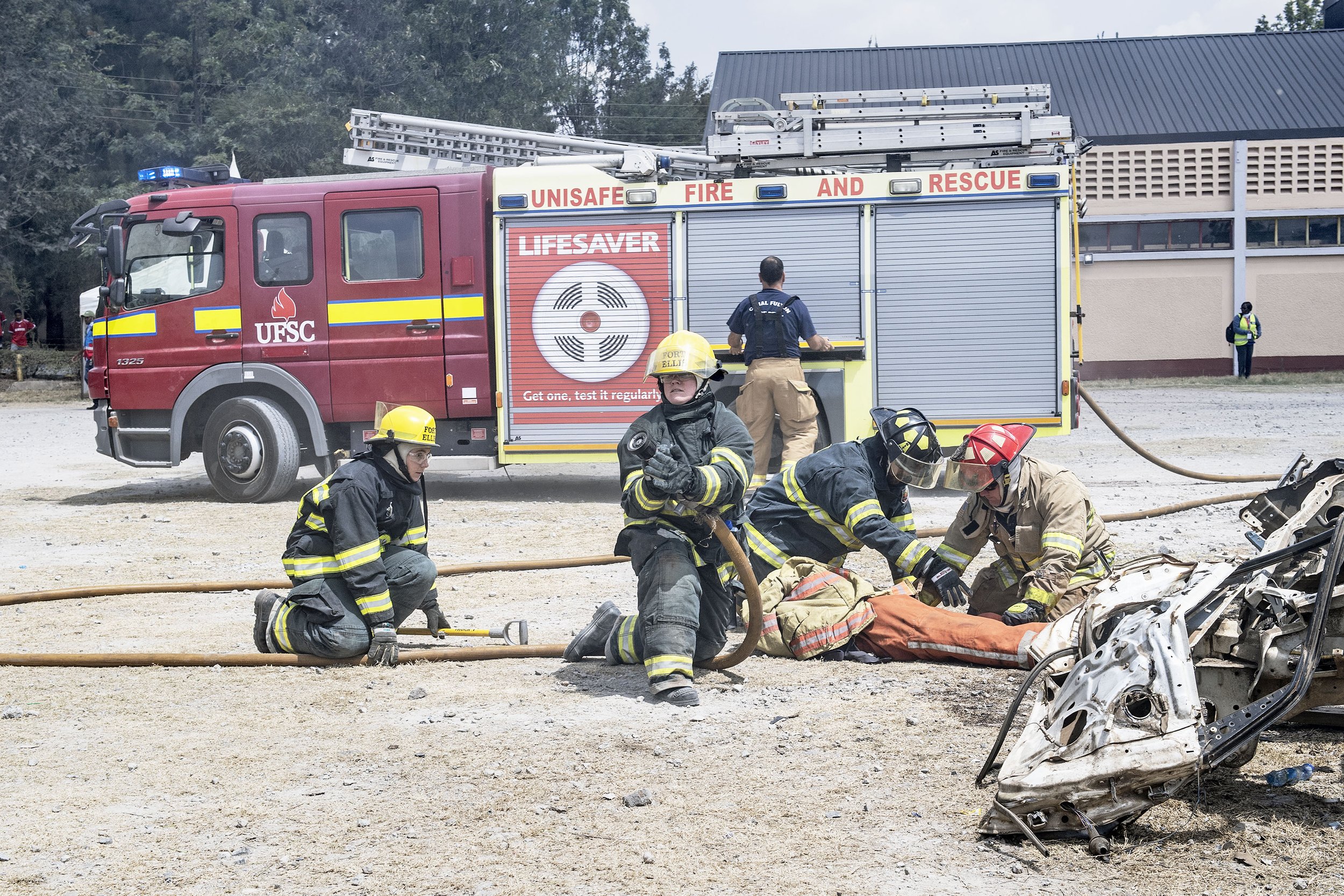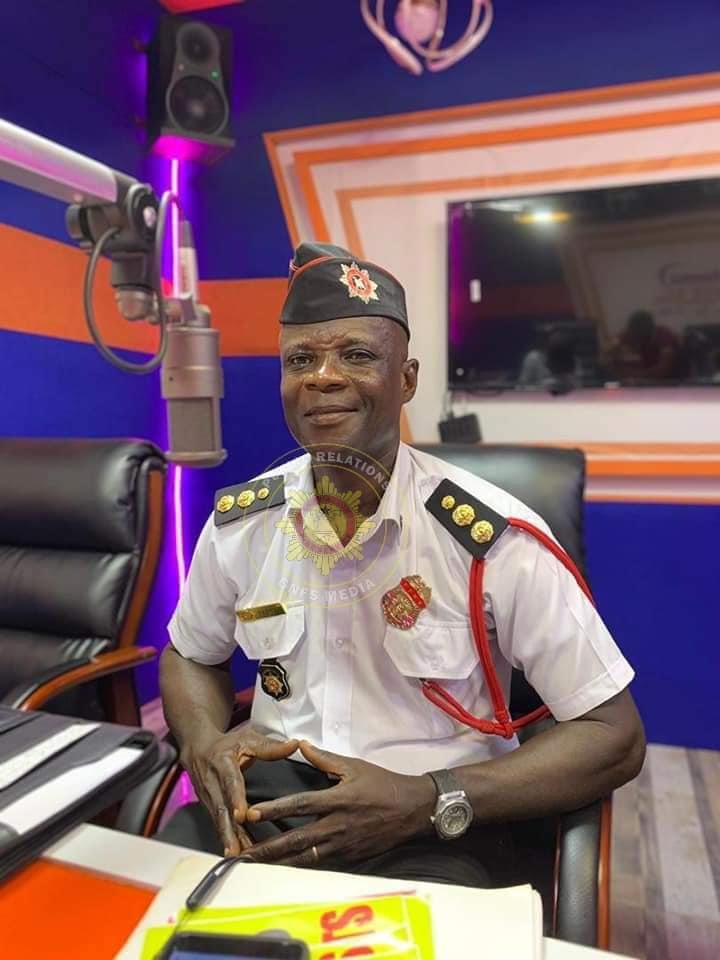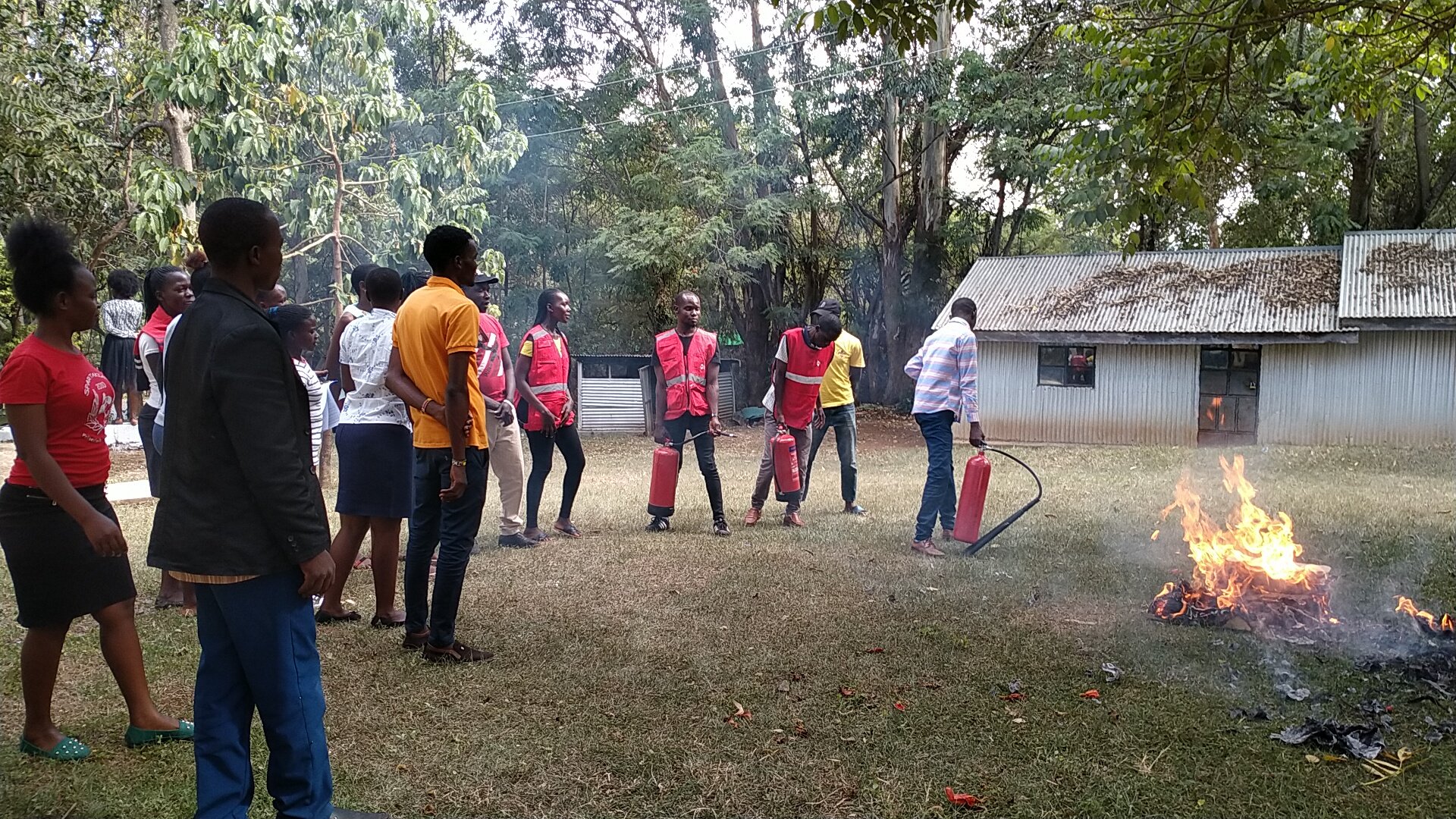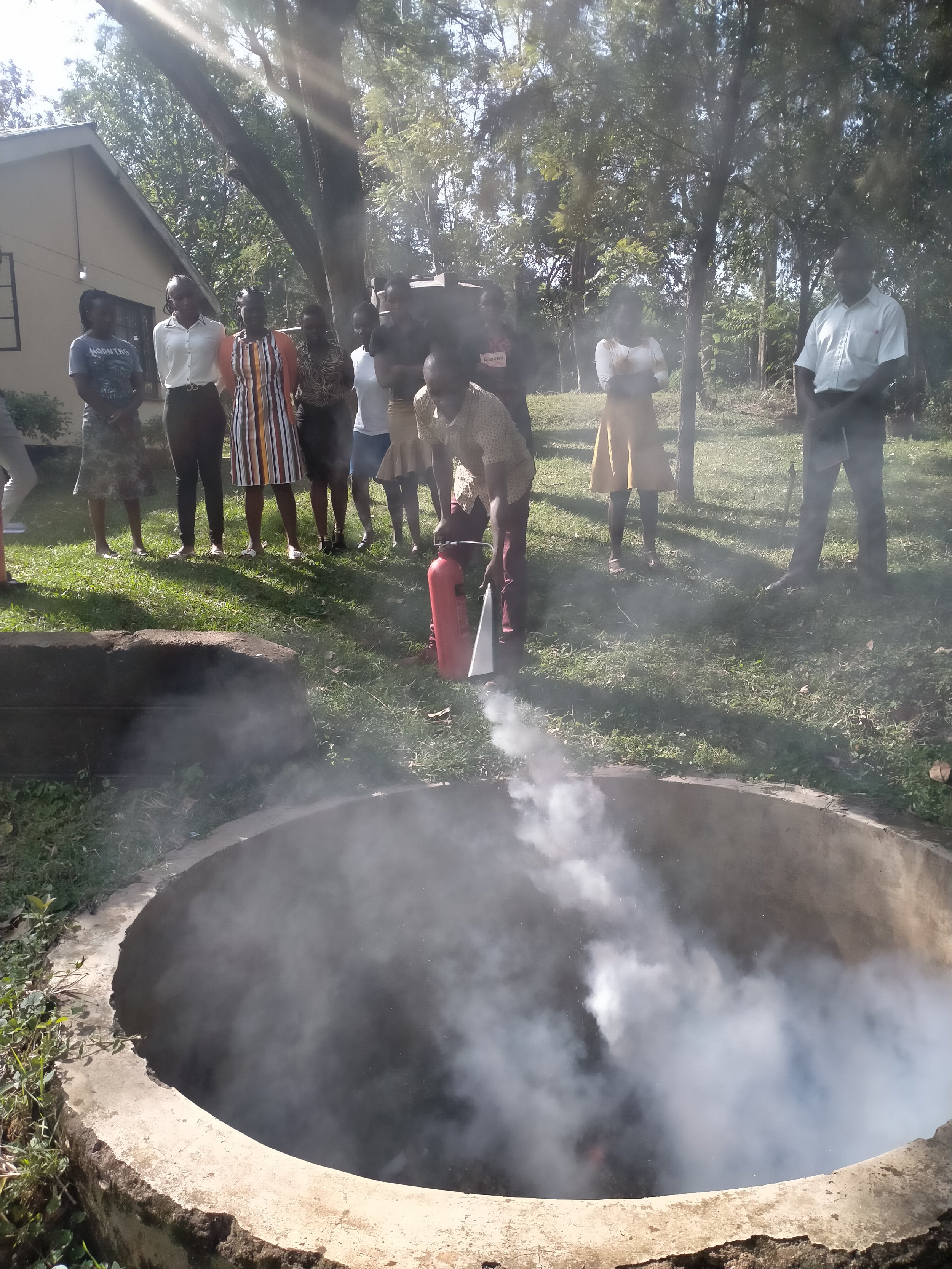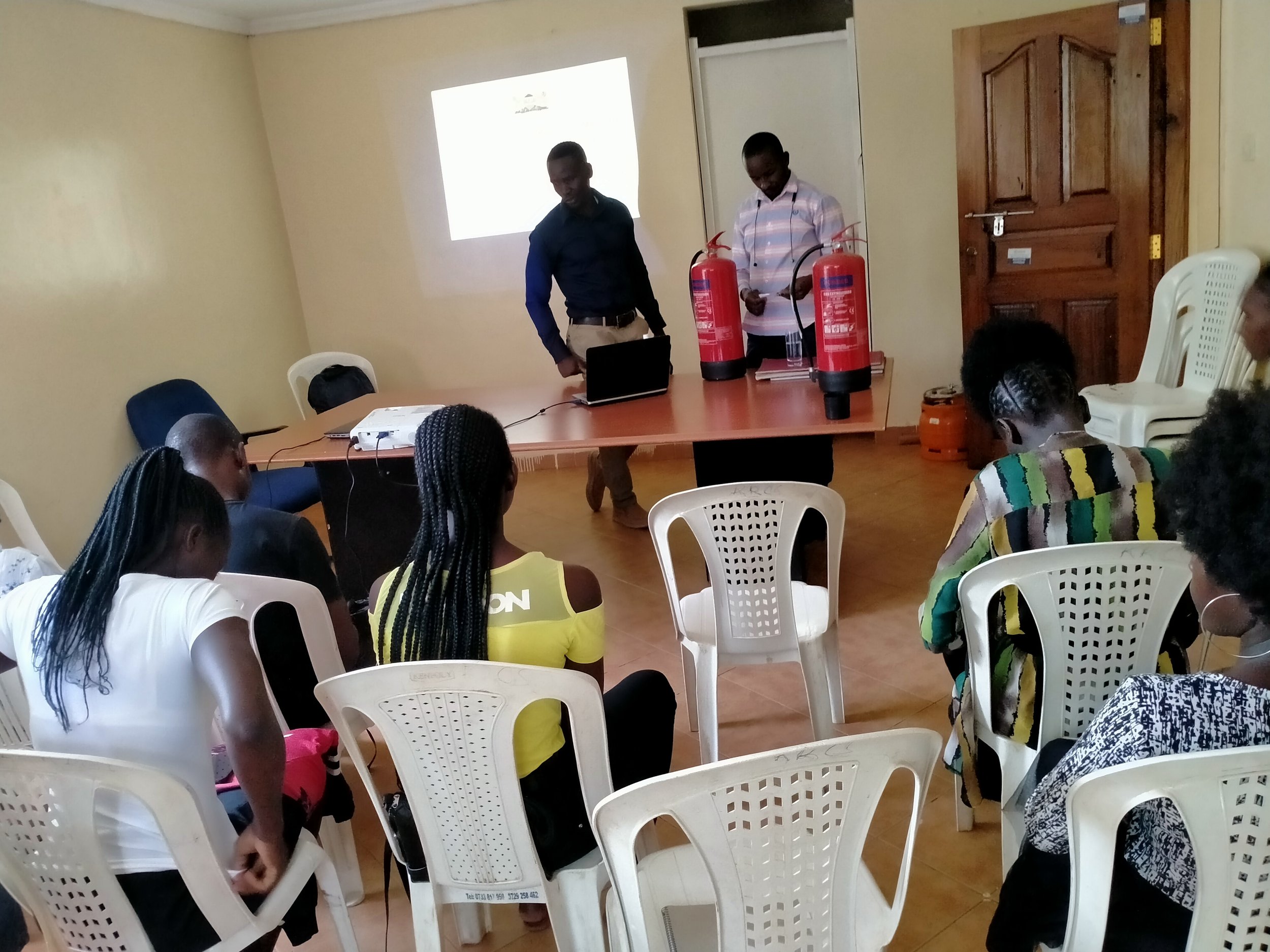Thank you for being a part of AFM! - maybe you are regular donor and friend of ours, maybe you supported a team member that has trained firefighters in Africa, or maybe you have been part of an AFM event. Whatever your involvement - you are part of the work that is helping to develop fire services in Africa. Thank you! I’m writing to ask you to continue to be part of the impact that AFM is making in Africa by giving financially to AFM.
Nearly every day I hear stories of firefighters that feel empowered to do their jobs in Africa. I hear stories of community members who have started coming alongside the fire service in Africa and I learn about communities where lives have been saved due to the fire prevention work that is ongoing. Your support to AFM makes all of this possible!
This is just SOME of what’s happened already this year:
The Tochi and José Fire Safety Show is making a huge impact in Kenya with the Kenya Burn Society reporting that they have seen a 60% reduction in burns requiring hospital care compared to this time in 2022. We have 7 new episodes coming out by the end of 2023 to further expand our impact.
400 sets of firefighter personal protective equipment are being sent to Nigeria as part of a public-private partnership with FCT Fire Service, AFM & the Institute of Human Virology.
AFM’s weekly online trainings are averaging over 65 training participants each week!
AFM’s mission trip to Malawi in June resulted in training at all of the fire stations in Malawi and over 80% of the municipal firefighters in Malawi receiving training! Our team members were encouraged to see the growth of the firefighters over the past year. In addition to training we were also able to begin a mentoring program for the fire chief’s that we plan to grow in the coming year!
Every person needs to be safe from harmful fires. Africa Fire Mission is working to empower people with knowledge of how to harness fire for good: light, heat, cooking, so that they can be safe and secure in their homes. We are partnering with firefighters to ensure that they have the knowledge, training and equipment to effectively protect those they serve from unwanted fires and other disasters. Will you help us continue to provide life-saving trainings and equipment in Africa?
Here are some ways your donations will be put to work:
$25,000 provides funding for a Fire Safety Advocate in Africa.
$5,000 allows us to produce an episode of the Tochi and José Fire Safety Show
$200 allows to provide one hour of online training & certificates to 80 firefighters in Africa
$50 helps us provide one set of firefighter PPE to firefighters in Africa
$25 allows us to print one copy of our training of trainer’s curriculum so that firefighters and community members can train their community in fire prevention.
$10 provides one firefighter with safety gloves and eye protection
Our goal for this campaign is $50,400 – which will allow us finish our year strong and enables us to continue to expand our reach (requests are coming from Ghana, Nigeria and Zambia to expand our work). Will you help us continue to Train, Empower, Support and Encourage firefighters and communities in Africa with a gift to support the growth in our ongoing work?
Here are some ways to contribute:
Become a monthly donor or make a one-time donation - DONATE HERE >
Mail a check to us: P.O. Box 53242, Cincinnati, OH 45253
Double your impact with matching funds from your employer
Donate stock: email me and I’ll send you the details
Designate a gift to Africa Fire Mission in your estate
Introduce us to individuals or businesses that might be interested in partnering with us financially
Thank you for providing firefighters and other first responders in Africa with the training and equipment they need to thrive and flourish and provides community members with life-saving fire prevention trainings.
Please contact me directly if you have any questions about our programs and how you could get involved in our work!
With Gratitude, Nancy
Nancy L. Moore, LISW-S; Co-Founder & Executive Director
nancy@africafiremission.org
(513) 620-4236
SAVE THE DATE!
AFM’s annual event – The “Chama” - Saturday, October 14, 2023
Cincinnati Fire Museum.

